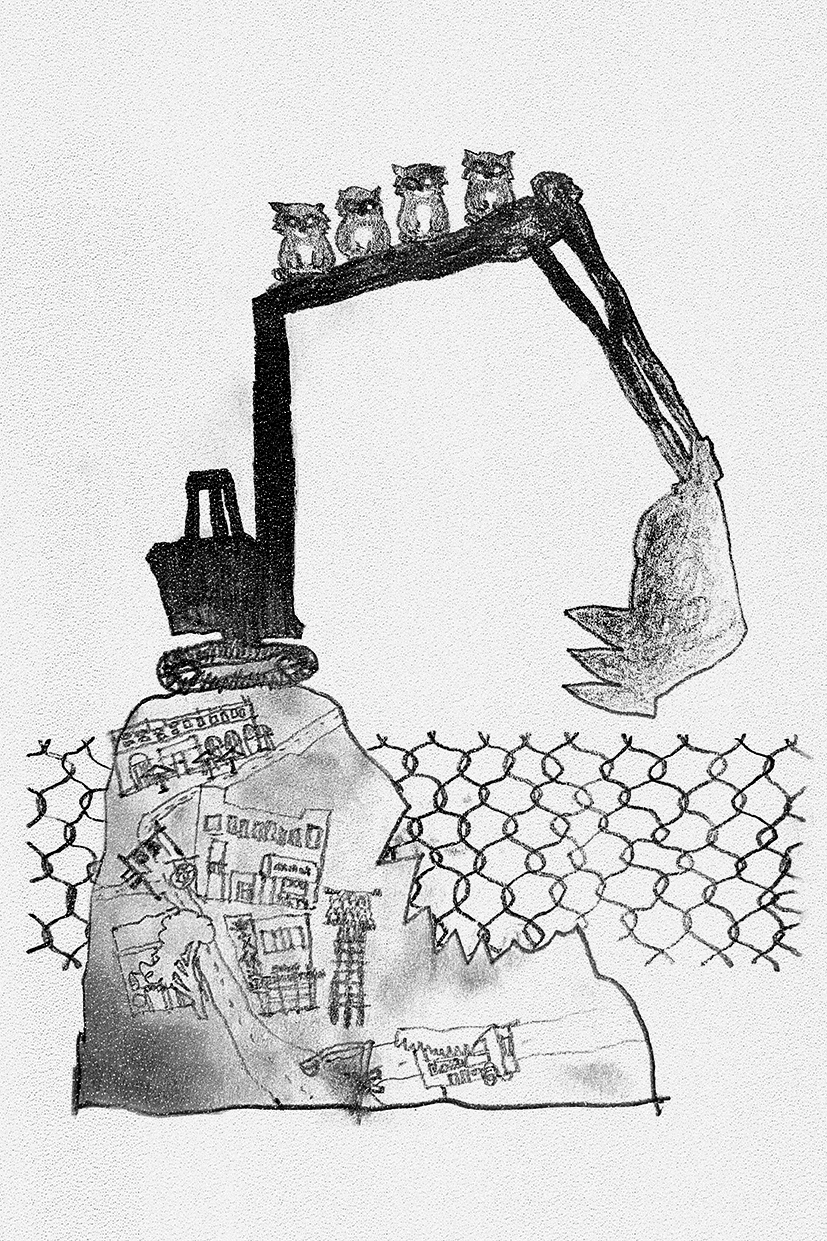The Gentrification of Little Tokyo, Los Angeles
An ongoing series illustrating the spirit against gentrifcation in Los Angeles’s historic Little Tokyo.
「 しかたがない」じゃない。



“Anzen Moves Again”(2023); left. “Pom Poko x Toriumi Plaza” (2022); middle. “Toriumi Akete” (2024); right.
“Anzen Moves Again”
Anzen Hardware opened in 1946 by Tsutomu Maehara, post Tule Lake WWII internment, as a supplier to local SRO hotels in Little Tokyo. Within that time, the store relocated one block down from its original location and transferred ownership to Nori Takatani. In 2023, after decades of faithful service, Nori-san has retired and entrusted Anzen Hardware to the Hirose family, who come from Maehara’s lineage.
But unable to renew the current location, Anzen must move once again. It will be sharing space with California Floral Co., beside Azay, within the building the Hirose family owns. The second floor contains one of Los Angeles’s remaining affordable housing SROs, returning full circle for Anzen; affirming community collectivism at its root.
Gentrification clouds Little Tokyo into an archipelago of surviving authenticity. Cultural commodification materializes as developments that serve the interests of tourism, not the people themselves. Suehiro has been painfully evicted this year in favor of a dispensary. Anime stores and fashion boutiques come to dance on the ghosts of displacement. And these ghosts stir and live on in what we choose to do.
We must fight for the life of Little Tokyo, for Okinawa, for Palestine. On the local level, this life manifests in the form of physical spaces that are fundamentally invested in serving low-income, immigrant, unhoused, working-class community.
We must challenge and hold accountable what it means to be business owners, community servants, community members. Strive for that Anzen legacy.
That is what it means to honor Anzen Forever!
“Pom Poko x Toriumi Plaza”
I love Pom Poko (1994, directed by Isao Takahata). It was a childhood favorite, and more powerful now that I recognize its themes in my own life. At the end of the film, the tanuki sit atop a construction vehicle and overlook the destruction of the land that used to be their home. Wrought by dirt hills and housing developments, it’s incomparable to the lush greenery they once had. With the last of their power, they briefly transform the land into its likeness from many years ago. The humans see how they used to live within nature, tend to and care for it, and a woman cries out at the illusion of her long lost mother. This part always makes me cry. I see the despair, loss, and regret from both the tanuki and the people who did it themselves. I feel the tanuki will never win.
In the artwork, a construction vehicle teeters on a mountain embedded with a map of Little Tokyo. A chunk is missing from the mountain– land that has been historically affected by forces of colonialism, displacement, and gentrification. Present day Los Angeles is on indigenous Gabrieliño Tongva land, yet only 1-acre has been returned as of 2022. During WW2, Japanese-American incarceration vacated Little Tokyo. As Black residents moved in from the South, the neighborhood became known as Bronzeville; only to face displacement again upon Japanese-Americans returning post-war, and both groups racially discriminated against by white landlords and residents.
In recent years, Toriumi Plaza has been fenced off and inaccessible to the public since March 2022. New, tall buildings cast shadows over what little authenticity remains, with the closure of 111-year old legacy business Mikawaya, eviction of Suehiro, and location transfer of 77-year old Anzen Hardware. All the while, an influx of anime stores and boba shops reveal the interests of an uncomfortably orientalist, Japanophile brand of tourism. It’s nearly impossible to walk through Little Tokyo without encountering cosplay and revolving storefronts. A community is hijacked as a hyper commodified cultural attraction of itself, of what its inhabitants do not even remotely identify with.
Four tanuki sit on the vehicle, reflecting, processing... This piece captures my sadness and my hope. It begs for action in the preservation of Little Tokyo’s heart as an interdependent, multicultural, self-sustainable community.
“Toriumi Akete”
Over 2 years since the sweep on Toriumi Plaza, this corner of Little Tokyo remains fenced off.
This illustration meditates on a quiet night. The wind has dismantled the fence; invites us to reimagine Toriumi inseparable from its cyclical failures of withheld land & forced displacement.
No fences, no cages, no walls-- all power to the people!
More on Little Tokyo displacement:
Relocation — and New Beginnings —for Anzen Hardware in Little Tokyo
Historic Suehiro Cafe is being evicted. Is rail development harming ethnic communities?
Tule Lake History
Related:



